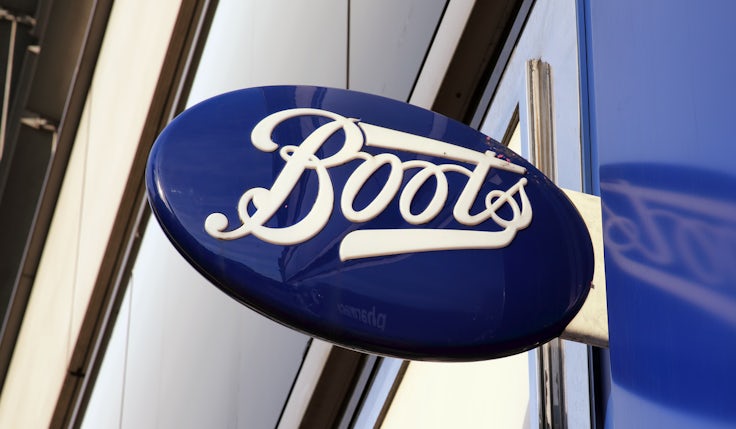If marketing leaders don’t take a stand we all risk losing control
It takes courage to challenge the status quo and drive change but marketers are increasingly bowing to the pressure of the C-suite, which needs to stop.
 Why is it that just about everyone today in business thinks they are better qualified to do marketing? Whether it’s magicking up new propositions, airing views on making better ads, urging us to do more digital and social, to price differently or open up new channels. It even goes as far as suggesting our branding need different colours and typefaces – so we can look like Apple or Google. I wonder if the CFO would appreciate it if I suggested a different and completely ill-informed way of balancing the books?
Why is it that just about everyone today in business thinks they are better qualified to do marketing? Whether it’s magicking up new propositions, airing views on making better ads, urging us to do more digital and social, to price differently or open up new channels. It even goes as far as suggesting our branding need different colours and typefaces – so we can look like Apple or Google. I wonder if the CFO would appreciate it if I suggested a different and completely ill-informed way of balancing the books?
At random places around our home, my wife has BluTak’d quotes from Macbeth, to help my son with his GCSE revision. And a number spring to mind when thinking about this predicament marketers increasingly find themselves in.
“Fair is foul, and foul is fair.”
Once only the preserve of princes and royalty, this rather shameless and ignorant advice has become commonplace in too many businesses from the post room to the boardroom.
I can’t think of a marketer who hasn’t been advised by peers or pressured into accepting a pre-conditioned budget. It can sometimes become impossible to make the right decision with the right reasons. Have we made something once expert and specialised, mundane and universal through in-housing marketing and building big teams in the name of content, data and digital?
The business didn’t understand customer value well at all. And when it did, its first reaction was visceral rejection.
Perhaps it is worse, perhaps marketers have lost their courage. Courage to constantly challenge their organisation, their teams, themselves. Courage to use intuition, and move beyond what the data says, into emotional, behavioural or commercial insights. Courage to build brands that millions of customers really want, rather than what is easy to make and sell to a niche.
When courage and heart leave our marketing functions, the gates are opened for the anodyne, the mundane and the ordinary, pandering to the baying of the right-brain, tie-wearing, starched collared, self righteous mob.
Boots’ CMO and CFO on how to help finance ‘get’ marketing
“That which hath made them drunk hath made me bold.”
Yet from time to time, the worm can turn. Knowing that customers are neither created equal, nor particularly loyal, we have a role to play yet. Especially as the cost of living crisis may well presage a recession, requiring bold action from the marketing community. The boldest move I made in my career involved confounding the commercial leadership team, turning our legacy approach on its head, and unlocking millions in extra value, all via a new customer segmentation.
One of the most powerful strategic weapons in the marketer’s arsenal, segmentation is extremely hard to do well. In this case we needed a customer value segmentation. The business didn’t understand customer value well at all. And when it did, its first reaction was visceral rejection.
It takes courage to challenge orthodoxy. It takes creativity, intuition and inquisitiveness. These are the ingredients that make the best marketing leaders.
The thing with a customer value segmentation is that it tells you which customers are the most valuable, and which are the least. It takes a universal look at their value, not just focusing on product A or product B. Add in a smidgeon of analytical modelling for churn, headroom and opportunity, and you start to have a strategic frame upon which to base commercial decisions, and move away from a solely product-led mindset.
Why the visceral rejection? The segmentation challenged base assumptions over which customer groups represented the most value. It also demonstrated where our products and propositions were weak. But perhaps most damning of all, it punctured the notion product use was singular. It shifted the business from a product centric view of the world – where each division could talk about ‘my customers’, to a shared view where we talked about ‘our customers’.
Through the segmentation we identified a cohort of customers (around 20%) that were driving 60% of the value in the business. They each used all our product bundles. They also had the most headroom for growth. Yet less than half of them were account managed, actively sold to or proactively serviced.
Confused.com’s CMO on how to get CEO buy-in for long-term brand building
“False face must hide what false heart doth know.”
When leaders don’t like something, especially if it confounds their view of the world, their first reaction is to question the data. Then they move on to questioning the methodology. If that doesn’t work they either get cross and storm off, or just ignore the results.
Winning them over takes persistence and patience. And a good deal of listening.
Once the segmentation was set we took small but very powerful actions.
When courage and heart leave our marketing functions, the gates are opened for the anodyne, the mundane and the ordinary.
We aligned our customer research to the key segments, so we could make targeted interventions at touch points where we were failing them.
We optimised our sales and service coverage models aligned to value, risk and opportunity. This alone delivered a staggering uplift in commercial performance.
Meanwhile, follow up data analysis among the highest risk segments enabled us to understand churn and put in place triggers to protect existing value. We then developed new propositions to win increased share in the most valuable segments. And put in place a life stage CRM programme to reach the non-account managed base, ensuring they were engaged by the business, profiled and when appropriate contacted by the sales team for retention, cross, up, or deep selling.
It took 18 months of challenge and complex technical development to deliver, but the project produced extraordinary results. It never would have happened if we had listened to the siren voices of status quo and silo thinking.
It takes courage to challenge orthodoxy. It takes creativity, intuition and inquisitiveness. These are the ingredients that make the best marketing leaders. But best of all, it leaves those cold grey bean counters saying “what bloody man is that?”
Our anonymous marketer has spent years working for big brands in large organisations. They have seen what you have seen, been left scratching their head at the decisions (or indecision) of others, had the same fights. They have also seen the possibility and opportunity of marketing. In this regular series, our marketer on the inside will unpick the failings, articulate the frustrations and speak up for marketers everywhere.






Comments